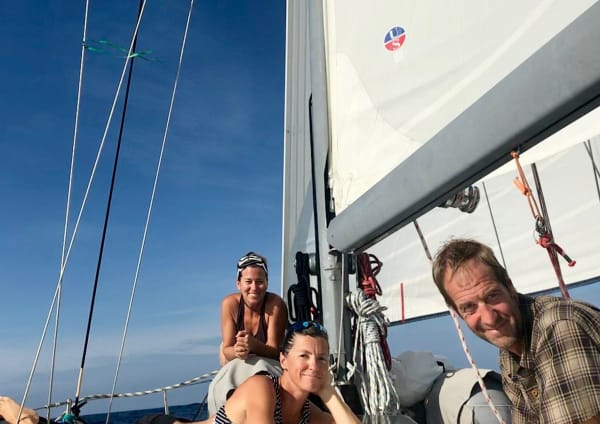Notes from the Pacific Crossing
WEEK 1-DEPARTURE AND DRIFTING
A month at sea, that’s what it became. We departed La Paz, Mexico on March 9 at 12pm and dropped anchor in Nuku Hiva on April 9 at 2am. Two days before we left Mexico, our friend, Andrea, arrived from New Orleans to join us on the journey. Like us, this would be her first ocean crossing, and she was eager for the experience. The wind forecast was not promising for the day of our departure, but it didn't stop us. We motor-sailed south down the peninsula, anchoring in the evenings, and awaiting higher winds to carry us out the mouth of the Sea of Cortez.
On the 5th morning, we raised our anchor at Los Frailes and headed off into the big blue where we found confused seas but good wind. After half a day, we lost the wind. With just a handkerchief of headsail for stabilization, we drifted towards our destination. The going was rough. A boat adrift doesn't handle like a boat sailing. A boat sailing has the potential to be quite stable, but with nothing to pin the boat to one side, Rhythm just bobs back and forth. So the next 4 days were long and slow with a low speed of 35 nautical miles in 24 hours. We have an engine and fuel, but not enough to motor the entire way. In fact, we have enough to motor for about 4 days. So we waited, we drifted.
Being uncomfortable is the least of our worries in these conditions, though. The boat is not accustomed nor efficient in these seas. Our sails slapped back and forth, plumbing became loose and water leaked onto the floor (and some vegetables), the windex fell off and hit the deck (luckily we were able to save all the pieces), and a bearing in our autohelm failed (also repairable).
We felt frustrated. All this time, money, and hard work, and the trip was not starting out well. To pick up the mood, we decided to abandon ship. Well, sort of. We took turns jumping overboard. We were at a depth of 10,000 feet, but the water was glassy, and the temperature was at least 80 degrees. Its color was a dark but brilliant blue that I have never seen.
WEEK 2 - WIND, FLYING FISH, AND BOOBIES ONBOARD
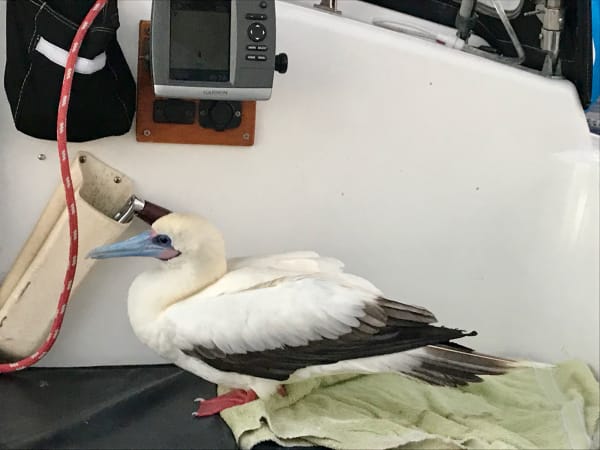
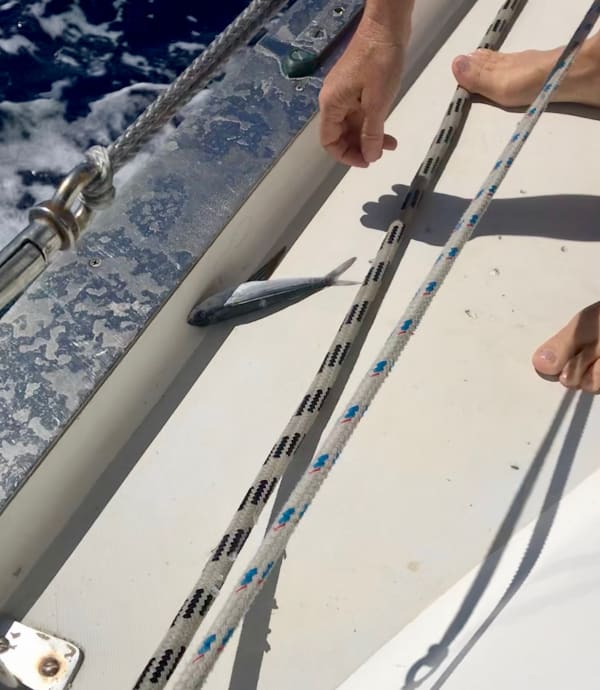
Then came the boobies (birds). At first, they were flying near the boat, soon they were landing on the boat, and eventually, they shitting on the boat. Most notably shitting on the solar panels and flying near our wind generator. We were loosing our power sources due to these stow aways. So after a bit of admiration, we started shooing them away. Unfortunately, we had a few casualties. One red-footed boobie hit the generator and was deflected into the cockpit. The little guy spent the night on the cushions in the cockpit, once again shitting everywhere. He was pretty pissed-off every time you approached him. I guess he didn’t realize he had parked himself right in front of our jib sheet winch. By morning he was alert, and with some encouragement, he flew away.
We finally got some wind. However, the wind was accompanied by a side swell, meaning conditions were better but still not comfortable. I should mention that despite all this discomfort, we never had any issues with seasickness.
Now that we were moving faster, averaging 130 NM daily, we settled into a routine. John took care of the captain duties: weather checking, fine-tuning sails, system management and repair, and course navigation. As the first mate, I kept the boat ship-shape, monitored water and propane usage, and handled the waste. Andrea and I took turns making meals and doing dishes. We were all generally awake and alert throughout the day with the occasional nap. In the late afternoon, we played a game of scrabble, listened to music, and ate dinner together. In the evening, we had 3 shifts: 9p-12p, 12p-3a, and 3a-6a. We rotated every 4 days. It seemed to work well for a crew of 3.
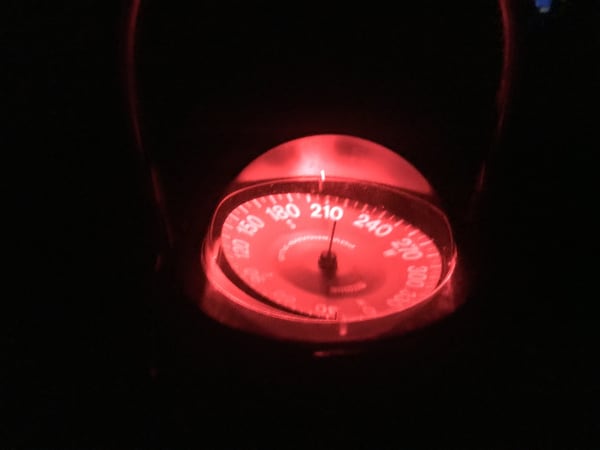
Our only scenery besides Big Blue was the sunrise, the sunset, the moon, and the stars, all of which were magnificent. This week we enjoyed the light of the full moon.
WEEK 3 - CARE AND FEEDING
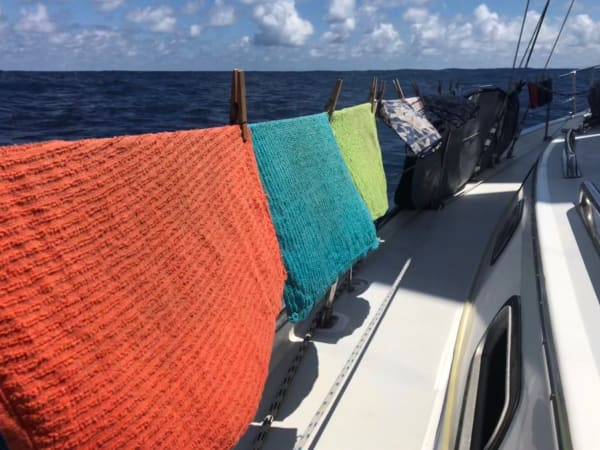
We filled our days doing laundry in a bucket, taking solar showers on the deck, reading, doing a work-out or some yoga, and, if we were lucky, watching some marine life. We still had a fair amount of fresh veg/fruits thanks to our friend Martín, from the La Paz farmers market, who set us up with unripe organic produce. We voted our green tomatoes the MVP, and we were still enjoying them on the third week out. Dinners were our “fanciest” meals: sweet potato and bean enchiladas, salmon cakes, yellow veggie curry, falafel, goat cheese pasta, and cheesy grits with brussel sprouts to name a few favorites.
We were fortunate enough to have a school of about 1,000 dolphins swim with us for a half-hour before they got bored with our slow speed. That half-hour was magical.
WEEK 4 - EQUATOR CROSSING
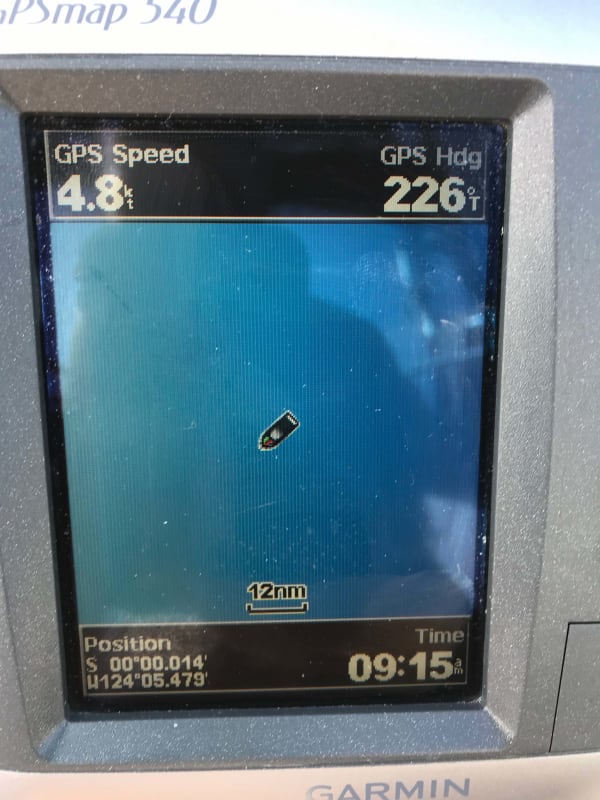
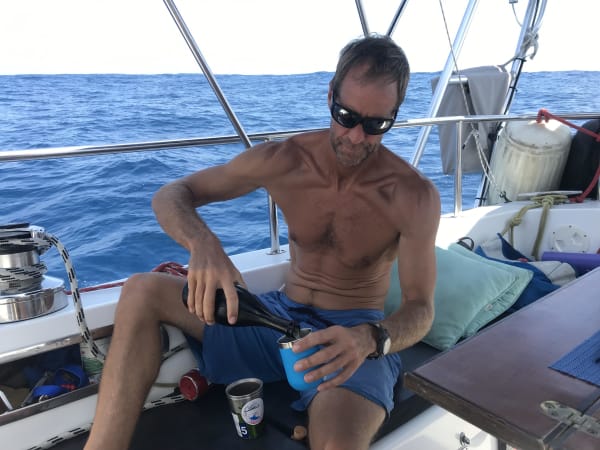
This week, on March 30, we crossed the equator at 124 degrees west. We hit this milestone and had a celebration. The following day, we were briefly becalmed and took advantage by going for another quick swim. The heat and the humidity at this latitude are intense, and the swim felt amazing.
The weather near the equator gets confused, and thus began the squalls. We were chased by rain, and sometimes lightning, several times a day. The squalls weren't just wet, the wind got erratic too, and some quick sail adjustments were required.
WEEK 4.5 - ARRIVAL
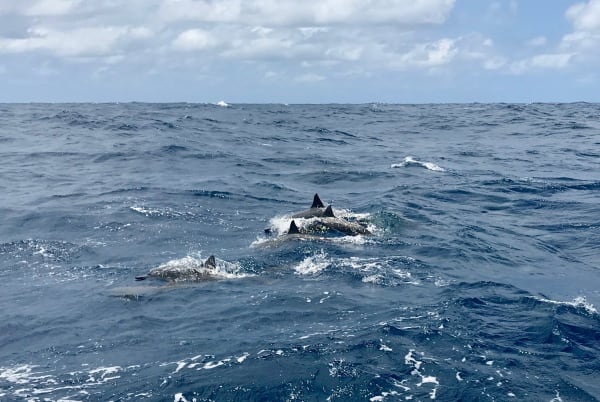
With the significant milestone of crossing the equator behind us, my mood seemed to worsen; we were only 2/3 of the way. Fresh food was limited to a few eggs, a bit of cheese, potatoes, onions, carrots, and cabbage. As if the gods knew I couldn’t take it anymore, they granted me the reprieve of a few cooler evenings with better sleeping conditions.
Finally, on day 26, we saw land. First on the GPS and then, finally, with our naked eye. The sunset against the islands brought tears to my eyes with the awareness that very soon we would stand on land.
In the dark of the night on April 9, we approached Nuku Hiva and smelled the floral scent of land. Without any moon to guide us, we approached with caution and wove our way through the 40 boats already at anchor in Taiohae Bay. We dropped anchor in 25 feet of water near the shore and fell asleep with smiles on our faces and pride in our hearts for what we had accomplished.
LASTLY
Thank you to all our friends and family for all the positive energy you sent us throughout this journey. We appreciated the emails and apologize for any worry we may have caused. We are safely in the arms of French Polynesia and ready for exploration.
